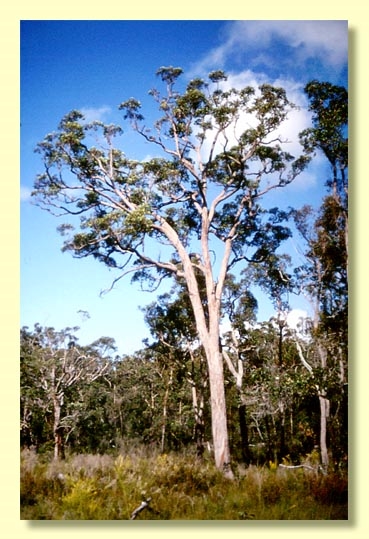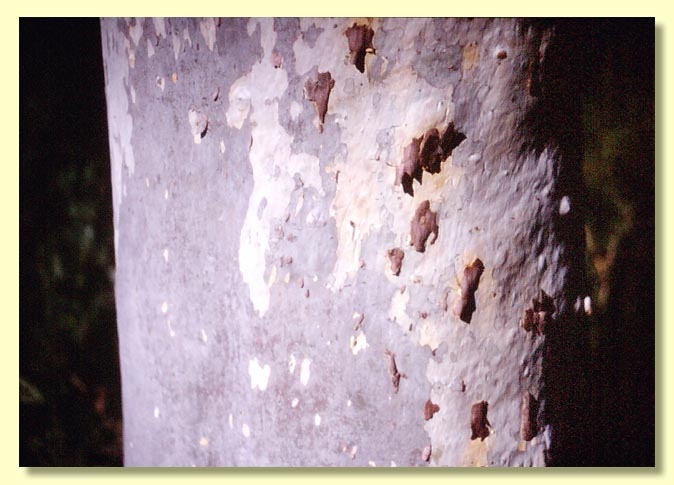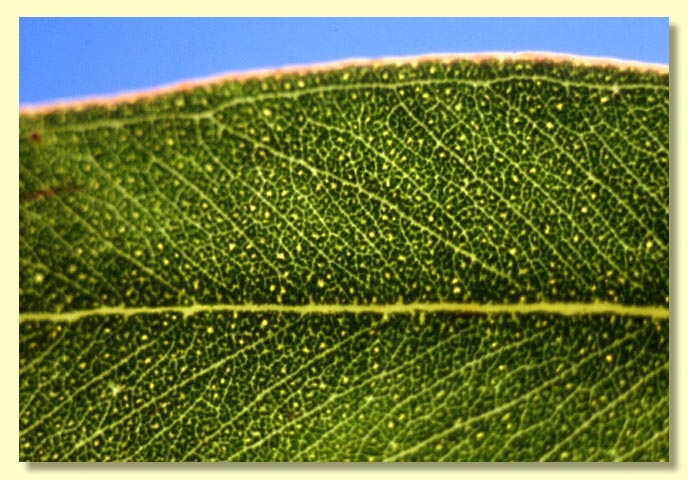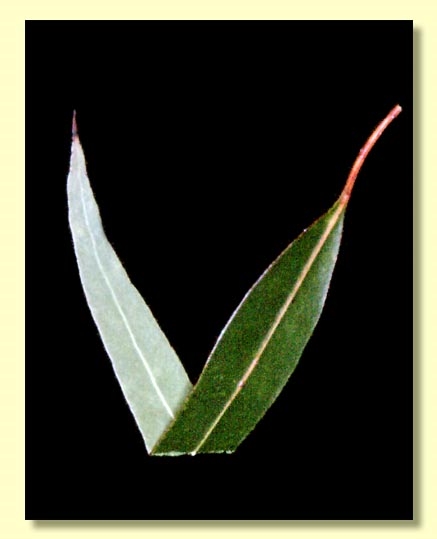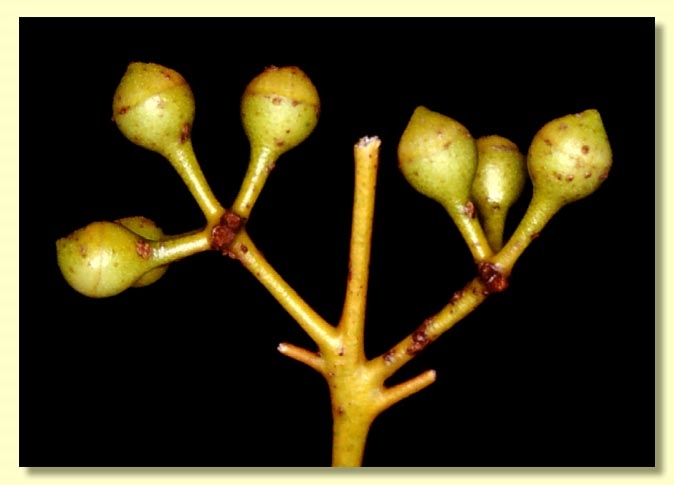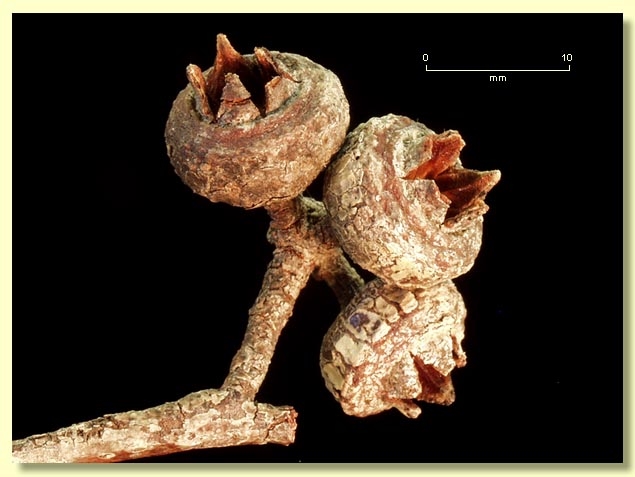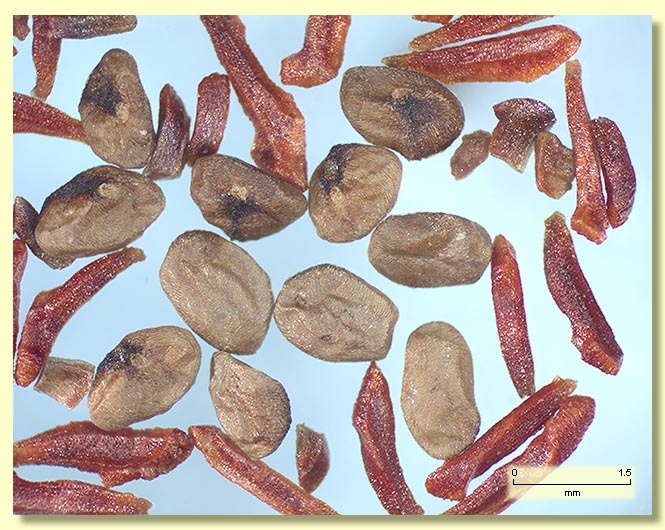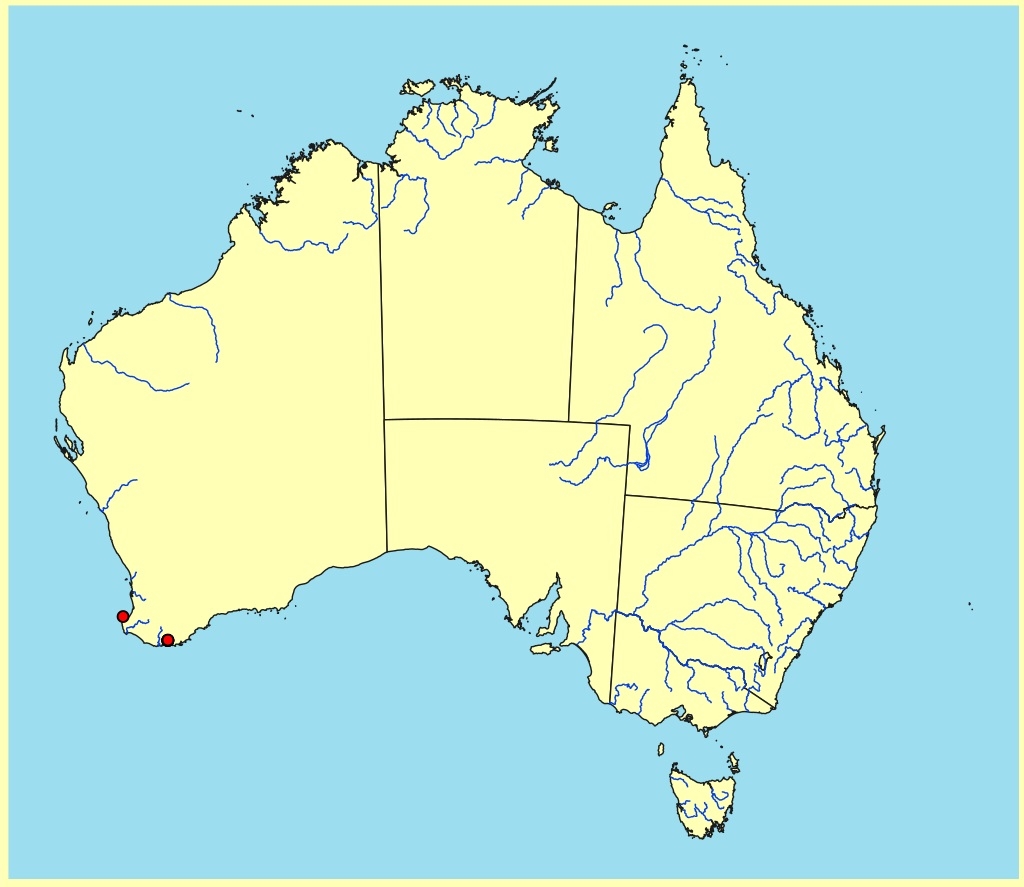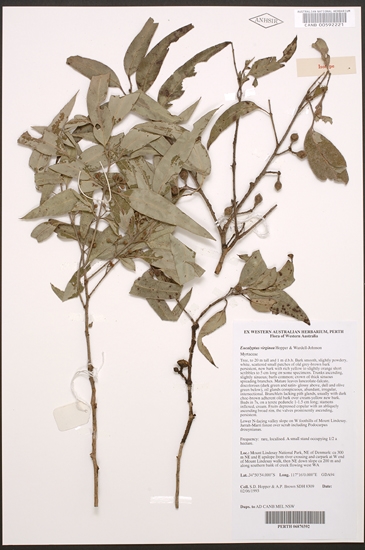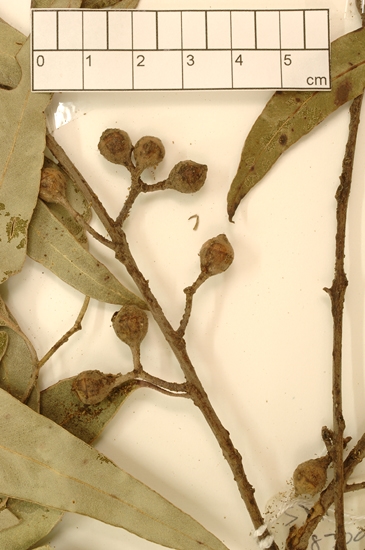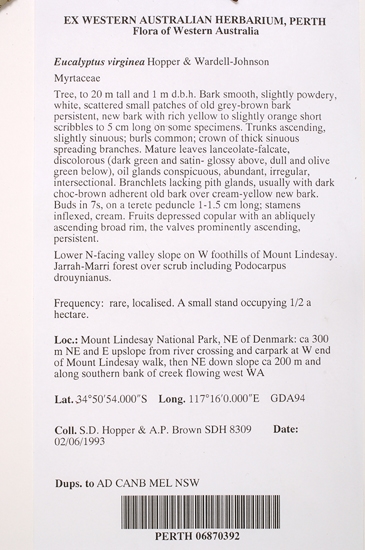Eucalyptus | Symphyomyrtus | Bisectae | Destitutae | Curviptera | Inflexae
Euclid - Online edition
Eucalyptus virginea
Bark smooth throughout pale grey over powdery white to pinkish; sometimes with scribbles.
Branchlets lacking oil glands in the pith.
Juvenile growth (coppice or field seedlings to 50 cm): not seen
Adult leaves thin, alternate, petioles 0.8–1.8 cm long; blade narrowly lanceolate to falcate, (5)7–11(17) cm long, 1.3–2.5 cm wide, base tapering to petiole, margin entire, apex acute, distinctly discolorous, glossy and darker green above, side-veins greater than 45° to midrib, reticulation dense, intramarginal vein close to margin, oil glands scattered to numerous, mostly intersectional.
Inflorescence axillary unbranched, peduncles terete, 0.5–1.5 cm long, buds 7, pedicels 0.1–0.6 cm long. Mature buds globular to almost diamond-shaped, 0.6–0.8 cm long and wide, scar present, operculum rounded when mature to almost conical, stamens inflexed, anthers oblong, versatile, sub-basifixed, dehiscing by longitudinal slits, style long and straight, stigma tapered to blunt, locules 4, the placentae each with 4 vertical rows of ovules. Flowers white.
Fruit pedicellate (pedicel 0.1–0.6 cm long), cupular, 0.4–0.6 cm long, 0.7–1.2 cm wide, disc level to ascending, valves 4, exserted.
Seeds grey-brown to brown, 1–2 mm long, flattened-ovoid, dorsal surface shallowly reticulate, hilum ventral.
Cultivated seedlings (measured at node 10): cotyledons Y-shaped (bisected); stems not glaucous; leaves opposite, linear at first, becoming alternate after 7 or 8 nodes, petiolate, ovate, 3–6 cm long, 1.5–3 cm wide, dull, dark green.
Flowering time: January.
A forest tree endemic to Western Australia found in the Mt Lindesay area north-west of Denmark and disjunctly in the Meelup area. It occurs in valley bottoms and on slopes on shallow soil. Eucalyptus virginea has seasonally powdery white smooth bark and adult leaves that are darker green above and paler green on the underside (discolorous). It grows with two rough-barked species, C. calophylla (Marri) and E. marginata (Jarrah), both of which also have discolorous adult leaves.
Eucalyptus virginea is related to E. lane-poolei which is found further to the north in subcoastal areas and is a smooth-barked tree or a mallee of much smaller stature, with larger buds and fruit, concolorous adult leaves and occupies a drier habitat. E. virginea is also closely related to E. relicta, a fully rough-barked small tree restricted to the Busselton area.
These three species belong in Eucalyptus subgenus Symphyomyrtus section Bisectae subsection Destitutae because buds have two opercula, cotyledons are Y-shaped and branchlets lack oil glands in the pith. Within this subsection E. virginea, E. relicta and E. lane-poolei belong to the series Curviptera, a group of about 30 species characterised by relatively large fruit with a prominent ascending disc. Within this series E. virginea, E. relicta and E. lane-poolei are somewhat isolated from other species by having inflexed stamens in the bud and by its seeds which are flattened ovoid rather than obliquely pyramidal and flanged.
Eucalyptus virginea is thought to be one parent of the relict hybrid E. X phylacis which is restricted to one site, indeed one very old plant, near Meelup Hill (see Nicolle & French 2012a).
In the original description of Eucalyptus virginea, Hopper & Wardell-Johnson (2004, p229) state "bark smooth, slightly powdery.......sometimes with scribbles to 5 cm long." The occurrence of scribbles is of interest and worthy of further investigation because this species belongs in subgenus Symphyomyrtus. Scribbles caused by tunnelling moth larvae (Ogmograptis spp. ) are common on many smooth-barked species in Eucalyptus subgenus Eucalyptus found in coastal and montane eastern Australia but, on current knowledge, occur in no other Eucalyptus subgenus and also extend no further west than Kangaroo Island, South Australia, where they occur on E. remota.

